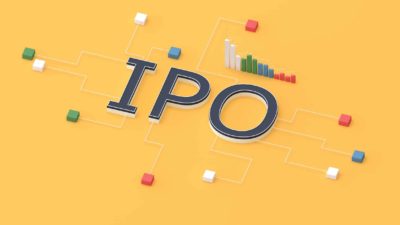The stage is set for the largest initial public offering (IPO) in the United States this year. Tonight, British computer processor technology provider Arm is expected to commence trading on the Nasdaq exchange, priced at US$51 per share.
Based on the total number of shares, the IPO price would value Arm at US$54.5 billion (A$84.74 billion). A successful debut would make Arm the world's 295th most valuable public company, sharing the title with cosmetics giant Estee Lauder Companies Inc (NYSE: EL).
Despite it expectedly being worth more than prominent tech names, such as Dell Technologies Inc (NYSE: DELL) and Atlassian Corp (NASDAQ: TEAM), Arm is a relatively obscure name to many.
Let's dive into what role this chip colossus plays and the critical facts to know ahead of its listing.
What is Arm?
Artificial intelligence (AI) is the word on everyone's lips this year, and demand for the hardware powering it has soared.
The companies that come to mind providing AI chips include Nvidia Corp (NASDAQ: NVDA) and Advanced Micro Devices Inc (NASDAQ: AMD). Many are blissfully unaware that Arm supplies the foundations that scores of these chips are built upon.
Arm described what its core business is in its prospectus, stating:
We architect, develop, and license high-performance, low-cost, and energy-efficient CPU products and related technology, on which many of the world's leading semiconductor companies and OEMs rely to develop their products.
The central processing unit (CPU) is the brains behind the computing that is done in the cloud, on your desk, and in the palm of your hand.
Arm CPU architecture can be found in 99% of smartphones globally. The prevalence of the company's chip technology is unmatched — reaching an estimated 70% of the world's population with its products.
The likes of Nvidia and AMD aren't the only customers of Arm. Tech giants exploring their own silicon, including Apple Inc (NASDAQ: AAPL), Alphabet Inc (NASDAQ: GOOG), and Amazon.com Inc (NASDAQ: AMZN), are licensing Arm's intellectual property (IP).
The company derives its revenue from charging a licensing fee and collecting a royalty on every computer chip produced containing its IP.
Why go public on the Nasdaq now?
A weak economic environment usually doesn't make sense to make a public debut. It is much harder to drum up the valuation and entice investors when everyone is tightening their belts. So, why would the head honchos of Arm be gunning for a listing?
We can only speculate, but there's a fair chance it has plenty to do with the excitement surrounding AI. The mere fact Nvidia shares are up 218% year-to-date, as shown below, should be enough evidence to prove an adequate appetite among international investors.
Moreover, reports are already suggesting Arm's IPO is ten times oversubscribed. In its pursuit of raising US$5 billion for its IPO, nearly US$50 billion of investor funds tried to secure a slice of the company.
In addition, Arm was going to be acquired by Nvidia in 2022 before being blocked by regulators. Perhaps an IPO on the Nasdaq was the next best option for private investors to cash out.
What to know before buying
Doing your due diligence before investing in any company is always worthwhile. A good place to start with Arm is its prospectus, which outlines its ambitions, risks, financials, and much more. At more than 230 pages long, it is extensive.
Here are a few points worth noting to give you a head start:
- Approximately 25% of total revenue is derived from China
- Around 57% of revenue is contained to only five customers (concentration risk)
- Arm faces competition from free and open-source architectures, such as RISC-V
The above provides only a glimpse into the company slated to hit the Nasdaq tonight. The full swathe of financial statements can also be found in the prospectus.









